Valley of the Kings – Prepare to Be Amazed
This is my fourth post on the many, many important Egyptian sites in an around the city of Luxor and I’ve hardly scratched the surface. So far our Adventures Abroad group has been confined to the east bank of the Nile and the city of Luxor proper where we’ve visited the Temple of Luxor and the temple complex of Karnak, both of which are simply astonishing. In some free time, Alison and I visited the wonderfully laid out Luxor Museum. Today, our group of seventeen travellers along with tour coordinator Martin Charlton and our Egyptian guide and resident archaeologist, Ahmed Mohsin Hashem, will cross to the west bank and begin our explorations on this side starting with the fabled Valley of the Kings. Won’t you join us?
As usual, the Egyptian morning dawns bright, sunny and not too hot. Looking across the Nile from where we are boarding a boat to take us to the west bank, I can see a number of hot air balloons are up in the morning stillness. This is an option we could have pursued, but declined as we will be taking one on the second portion of the trip over the Masai Mara in Kenya. In retrospect that was the correct decision as there was a constant morning haze over the west bank caused by the burning of sugar cane and the visibility just didn’t look that great. In contrast, the Masai mara was completely clear, quiet and the wildlife viewing spectacular. If you are interested you can read my post on that balloon ride here.
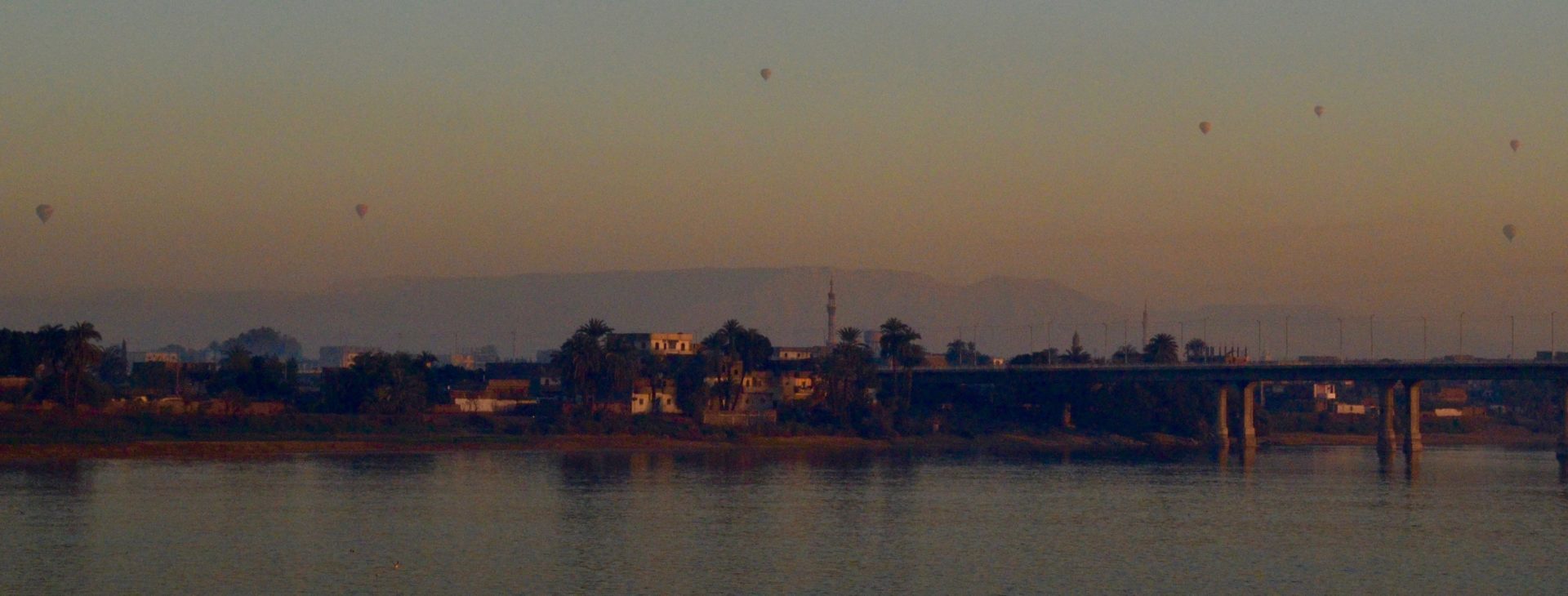
We boarded our motor craft at the hotel jetty and crossed the Nile as the sun rose higher, all pretty excited to be going to the place where Howard Carter discovered the near intact tomb of King Tutankhamun. That’s our smiling boatman who bears an uncanny likeness to Muammar Gaddafi.
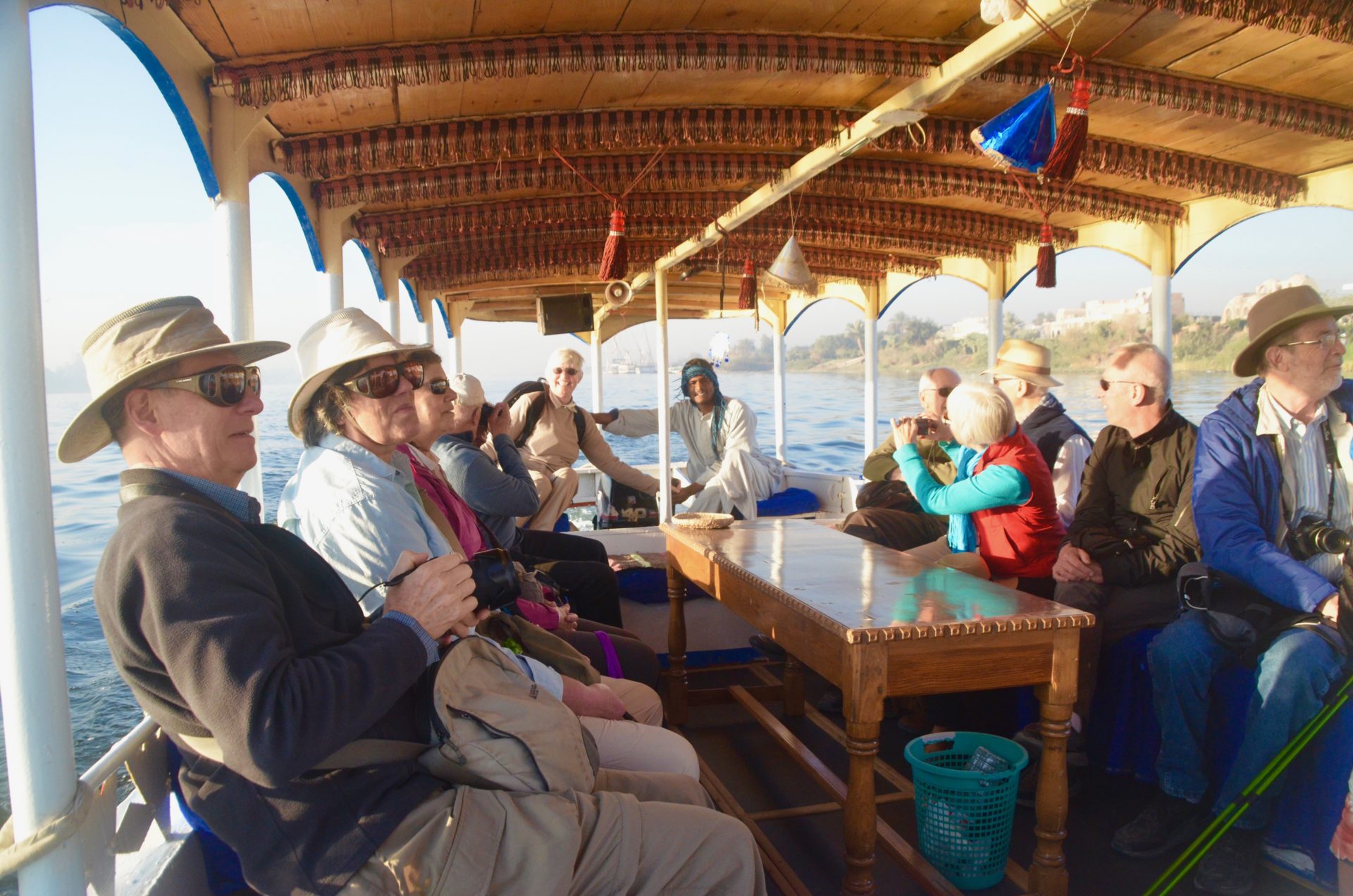
As we neared the other side I noticed this boat flying a large Canadian flag.
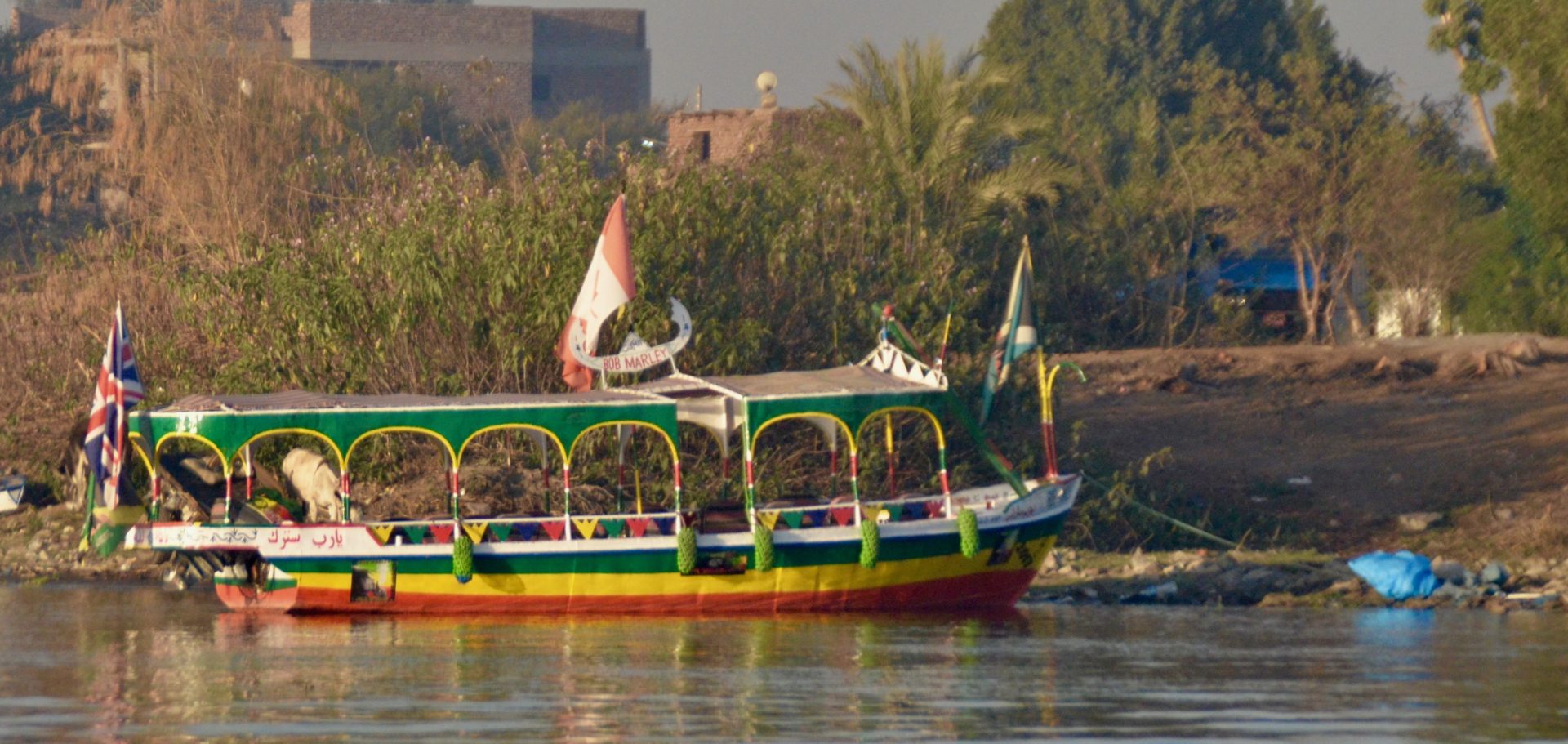
An Egyptian Donkey Ride
Waiting for us on the other side was not our bus as one might expect, but a fleet of donkeys. The group of us was each fitted out with one suitable for our size and those that didn’t want to ride had the option of taking a donkey cart instead. After getting on and off a camel a few days earlier in Aswan, these donkeys were a piece of cake and reasonably well behaved as well. Here we are all set to go.
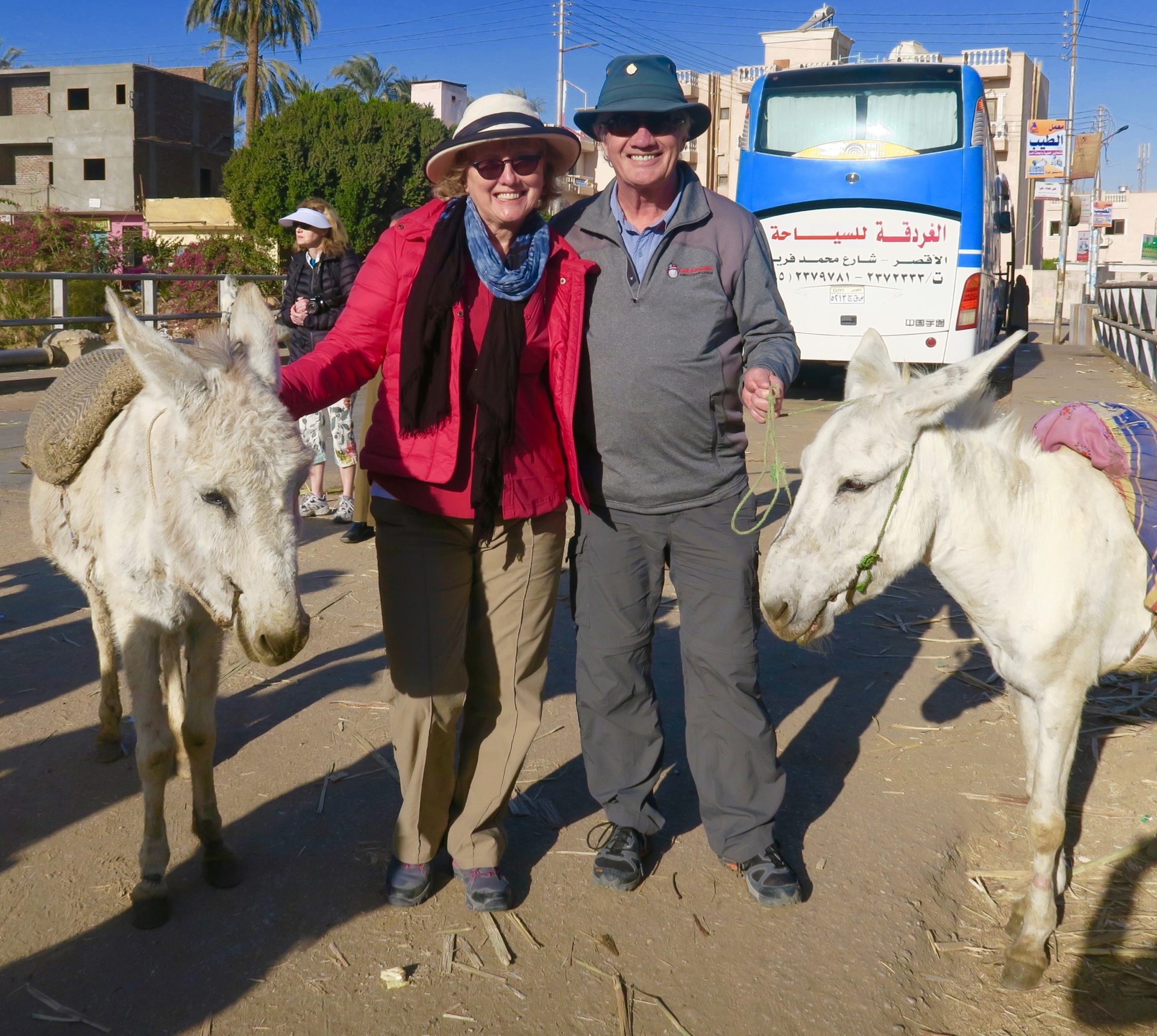
Now a donkey ride might not seem that special compared to camels or horses, but this turned out to be one of the highlights of the trip. The reason was simple – we actually got to see a slice of Egyptian rural life that few other tour groups bother to include in their itineraries. Yes, you come to Egypt to see the Pyramids and countless other ancient places, but there is also everyday life going on for millions of Egyptians and that can be just as interesting if properly and respectfully observed. I appreciate that Adventures Abroad makes a point of including these type of excursions into their tours wherever possible.
We move in single file at a medium pace although Martin and Ahmed demonstrate that you can get these guys going at a good clip when they need to head off a donkey that wants to wander the wrong way. Within a few minutes we leave the urban fringe of the west bank behind and are on a narrow country lane with sugar cane fields and date palms on both sides along with a sprinkling of small farms. It’s still early in the morning and many women and children are out feeding the ducks and chickens that every house seems to have. The people are friendly and most wave to us as we pass by.
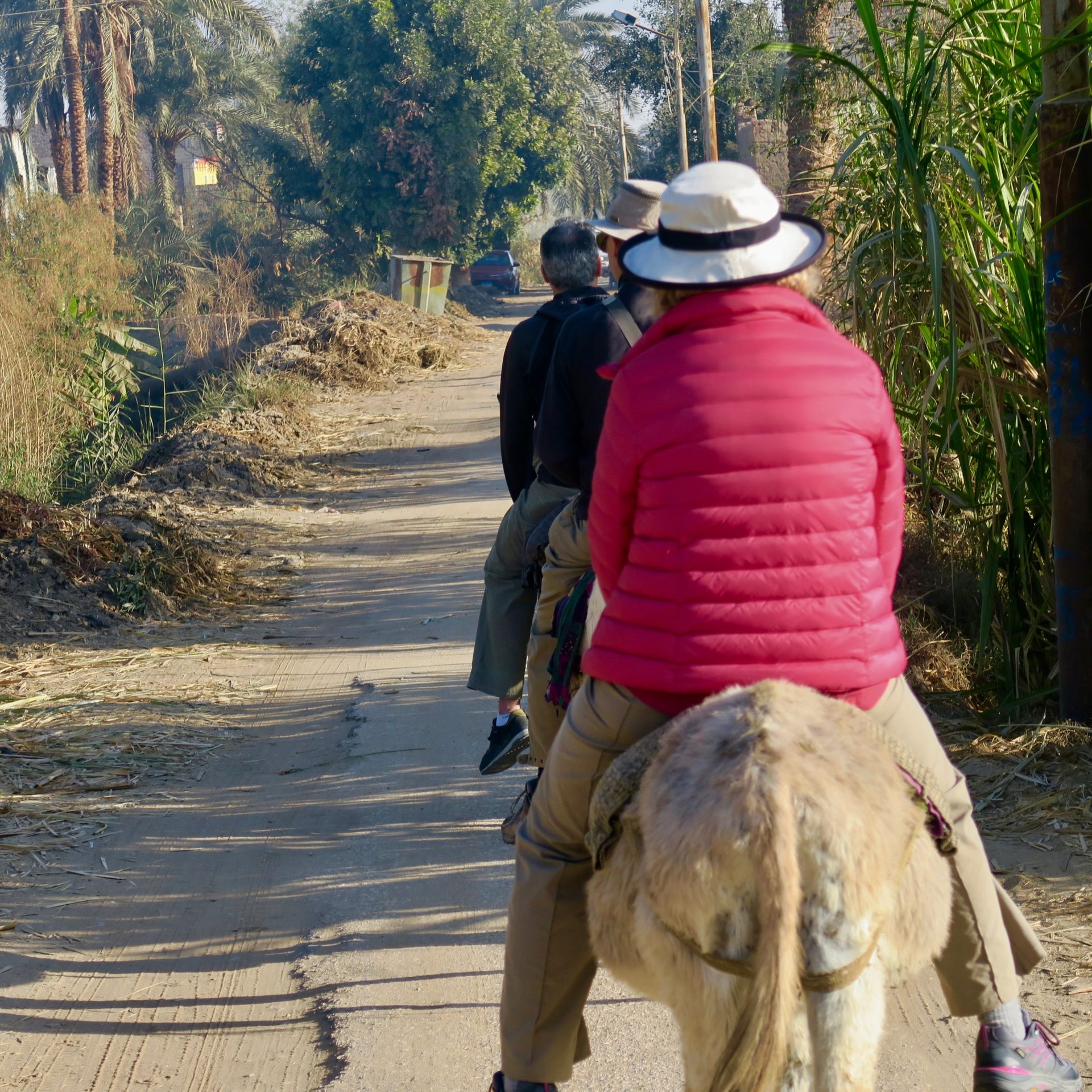
This is the very definition of bucolic and I am sorry to see it end as we meet up with the bus which will take us on to the Valley of the Kings. Before getting on the bus Ahmed offers me a piece of sugar cane that he has cut. I can’t say it bowls me over – too much fibre, but I can see why Egyptians of all ages like to chew away – sort of their version of chewing tobacco or coca leaves.
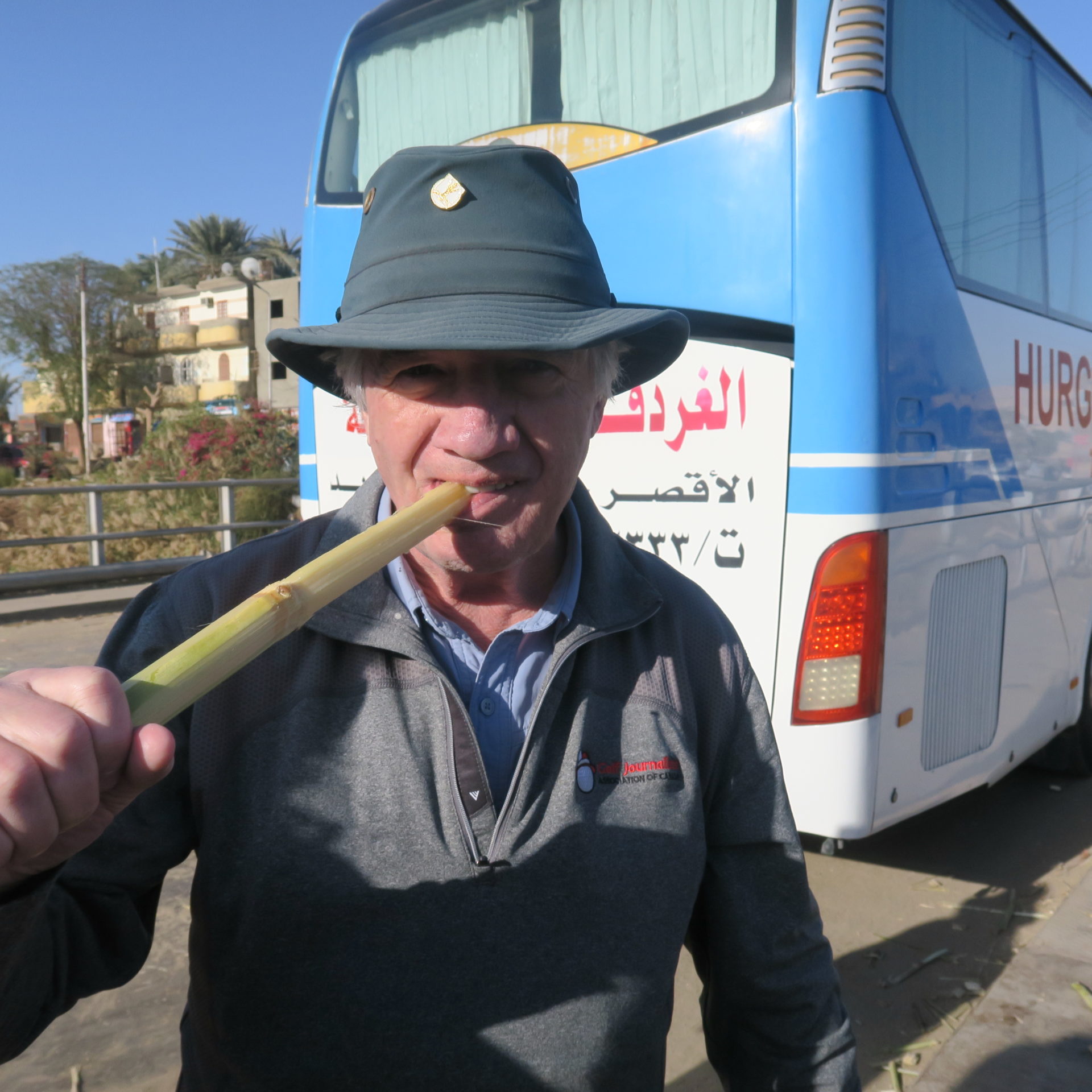
The west bank of the Nile at Luxor is one gigantic archaeological site. There are ruins everywhere and ongoing excavations at numerous sites including this one being conducted under the auspices of Boston University. It’s clearly providing a lot of valuable work for Egyptians and underscores the necessity of continuing to dig into the past in order to provide for the future.
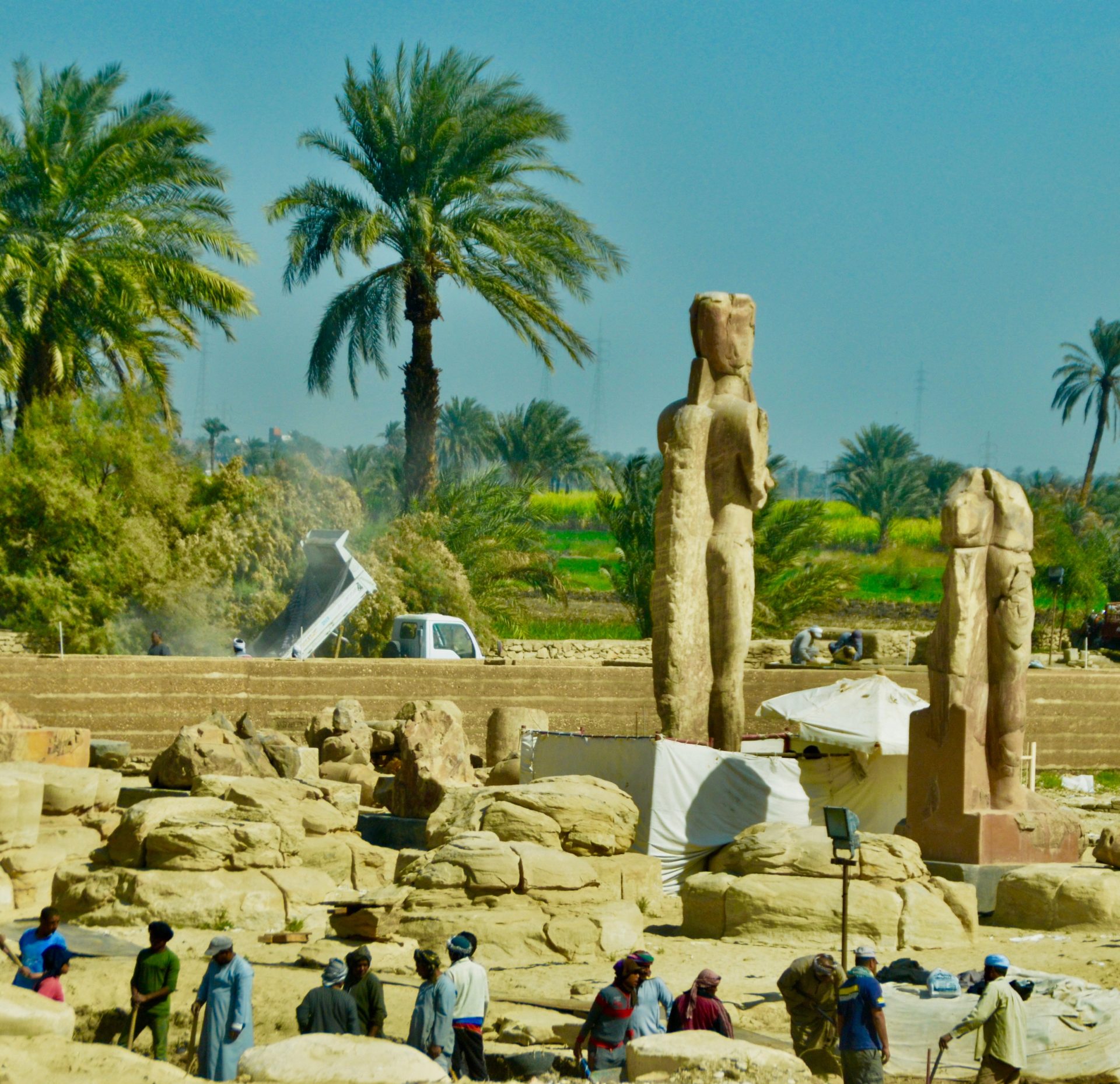
The Valley of the Kings
The Valley of the Kings was used as the burial site for many of the kings of the New Kingdom from 1550 to 1070 B.C. By then the Egyptian kingdom was thousands of years old and everybody knew that tomb robbers were the real mummy’s curse. No matter what precautions were taken the robbers almost always succeeded in getting into the tombs. So someone, maybe Hatshepsut or maybe Thutmose I depending on who you believe, came up with the idea that instead of broadcasting where you were buried, like in a pyramid, make the grave site so secret and so difficult to reach that it would foil the robbers for all eternity. Remember that these Egyptians really believed that their bodies would be resurrected and they would actually need all the stuff they were buried with, so having it stolen would be a real bummer in the afterlife.
Today there are sixty-three tombs that have been discovered of which twenty-six are those of known kings. When I mentioned that Hatshepsut might have been the first person buried here you might have thought , “But she was a woman.” However, as Ahmed explained to us, the head ruler of Egypt was always a king and it didn’t matter about the sex. Hatshepsut considered herself a king and not a queen, Also, it’s called the Valley of the Kings and not the Valley of the Pharaohs. Throughout these posts I’ve used the term king instead of pharaoh because that is actually the more accurate, if not as romantic sounding, term.
There are currently fifteen tombs open to the public although you can only visit three in one day plus pay an extra fee to visit Tutankhamun’s tomb. So let’s get going.
The road into the Valley of the Kings is winding, narrow and climbs gradually to a point well above anywhere the Nile might flood. It reminded me very much of a western arroyo – dry as a bone and completely lifeless which is pretty well what a wadi is. The rocks that make up the valley are sedimentary, mostly limestone and in the blaze of the mid-morning sun extremely bright. There were several security checkpoints along the way and there is only the one way in and out so these are probably a good idea.
After getting off the bus this is the only photograph I have of the Valley of the Kings. Photography is strictly forbidden anywhere within the confines of the area where the tombs are located.
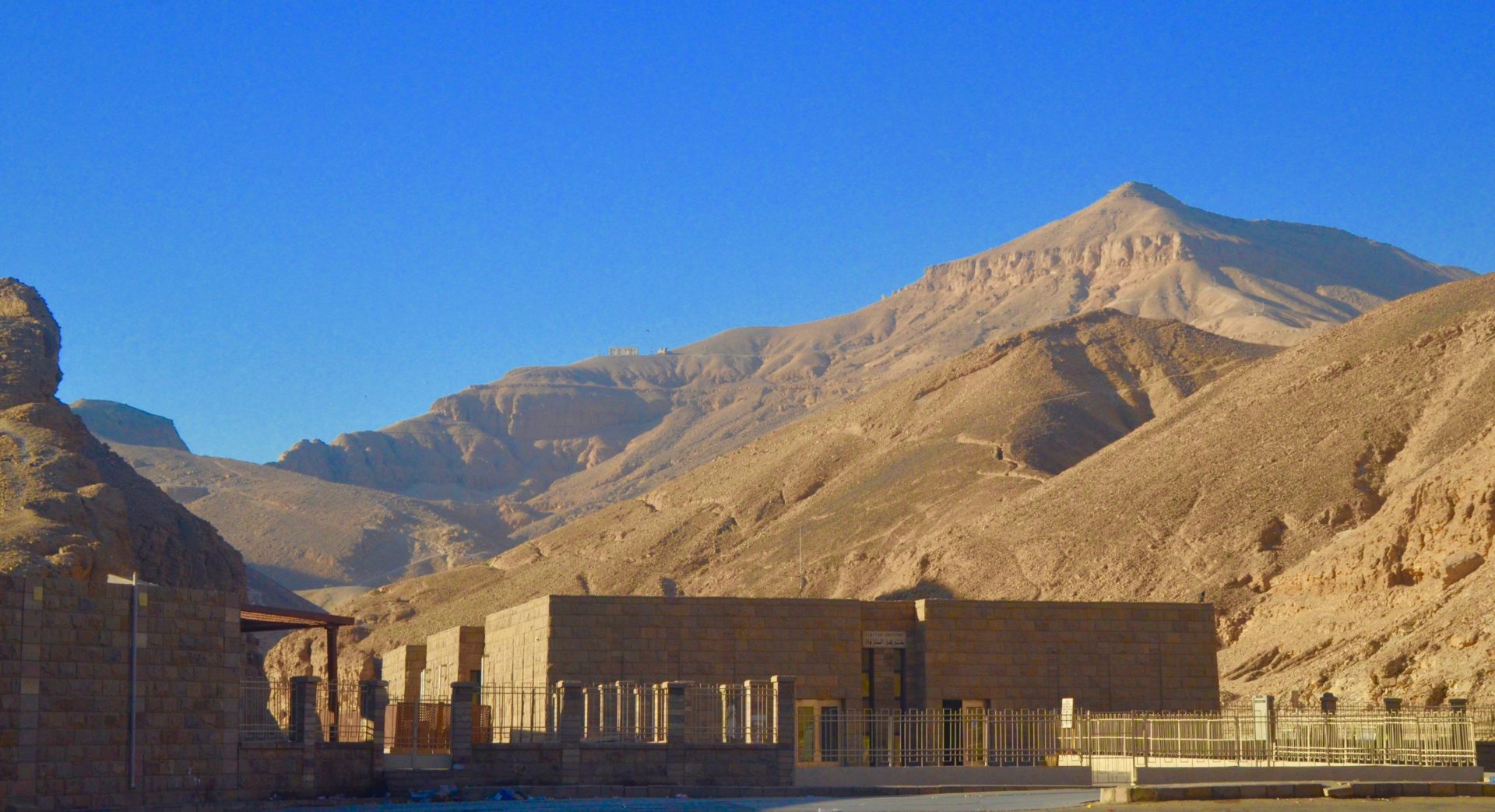
Once inside the building in this picture there is a fantastic 3D model of the entire Valley of the Kings. From the top it looks like this with the little dots representing the entrances to the various tombs.
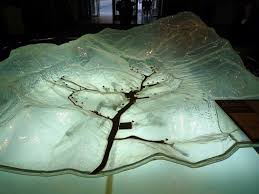
Then you bend down and see this scene which shows just how deep and elaborate the burial chambers were. The engineering involved is mind blowing.
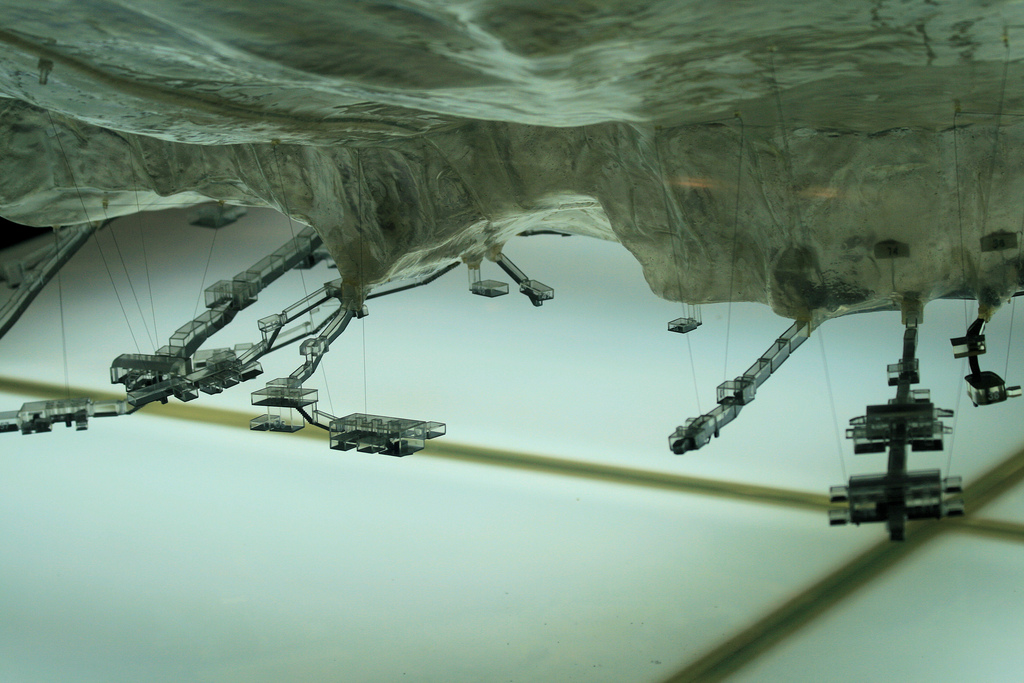
From the Visitor Centre you get on a tram and are transported just under a kilometre to the debarkation point from which you can explore the valley on your own. The site is huge and although it seemed like there were a lot of people around the parking lot and Visitor Centre, once you are actually in the valley it’s quite easy to find some solitude and get away from the crowds.
From here on I am going to use photos from a CD of thousands of images that Ahmed made available to us for a very reasonable price. The photographer is Mohammed Fathy, a friend of Ahmed’s.
Here is a view looking down on the Valley of the Kings and you can make out the various tomb entrances and the fact that it’s not overcrowded. There is also active archaeological work going in several places in the valley.

Today the three tombs that are open are those of Ramses IV, Merenptah and Thutmose III.
Ramses IV, Valley of the Kings
Ramses IV reigned for only six years and died in 1150 B.C. without accomplishing a lot. Still, he did manage to have the time to build this tomb which descends almost 150 feet into the hard rock of the valley.
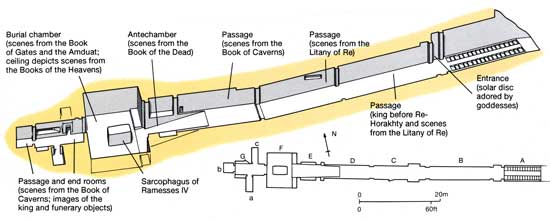
This was the first tomb in the Valley of the Kings I entered and I cannot describe the sense of anticipation. I think I was as excited as Howard Carter must have been when he first beheld the unlooted tomb of King Tut. The reality is that this tomb was robbed in antiquity and was quite well known to archaeologists dating well back into the 19th century and even to the Greeks and Copts thousands of years ago. Let’s go inside.
This is the passageway.
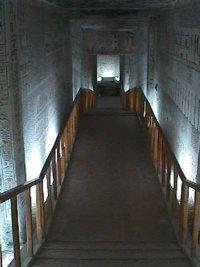
Which leads down to this. You can see that these passageways were not mere tunnels, but grand rooms with every square inch decorated in some fashion. Up until now we had seen only traces of the paintings that adorned ancient Egyptian monuments. This was an explosion of colour compared to anything we had seen previously.
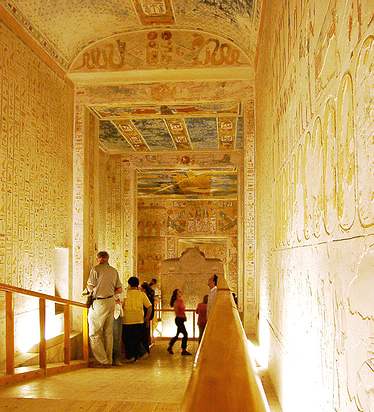
Here are a few closeups that illustrate the colour in Ramses IV tomb.
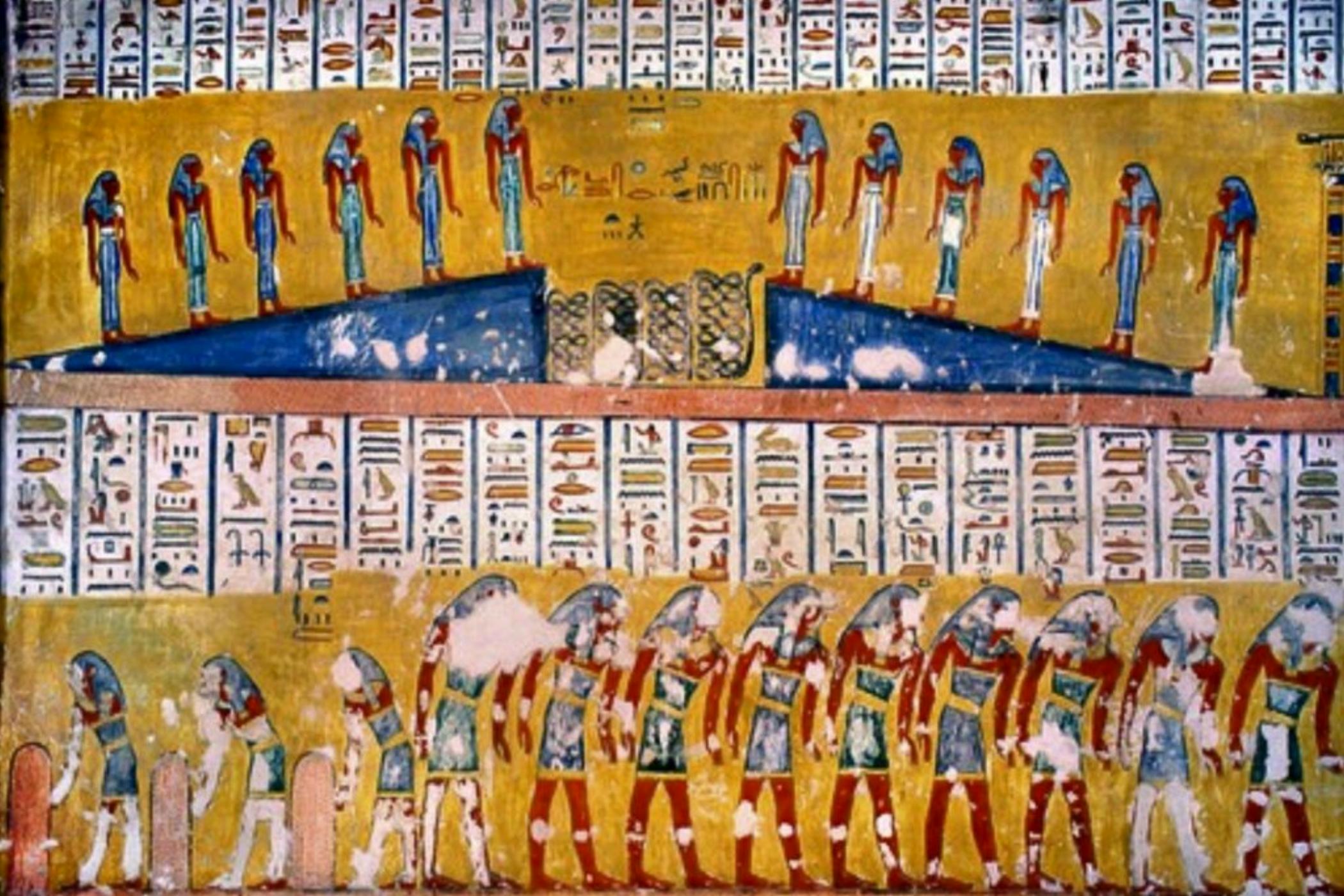
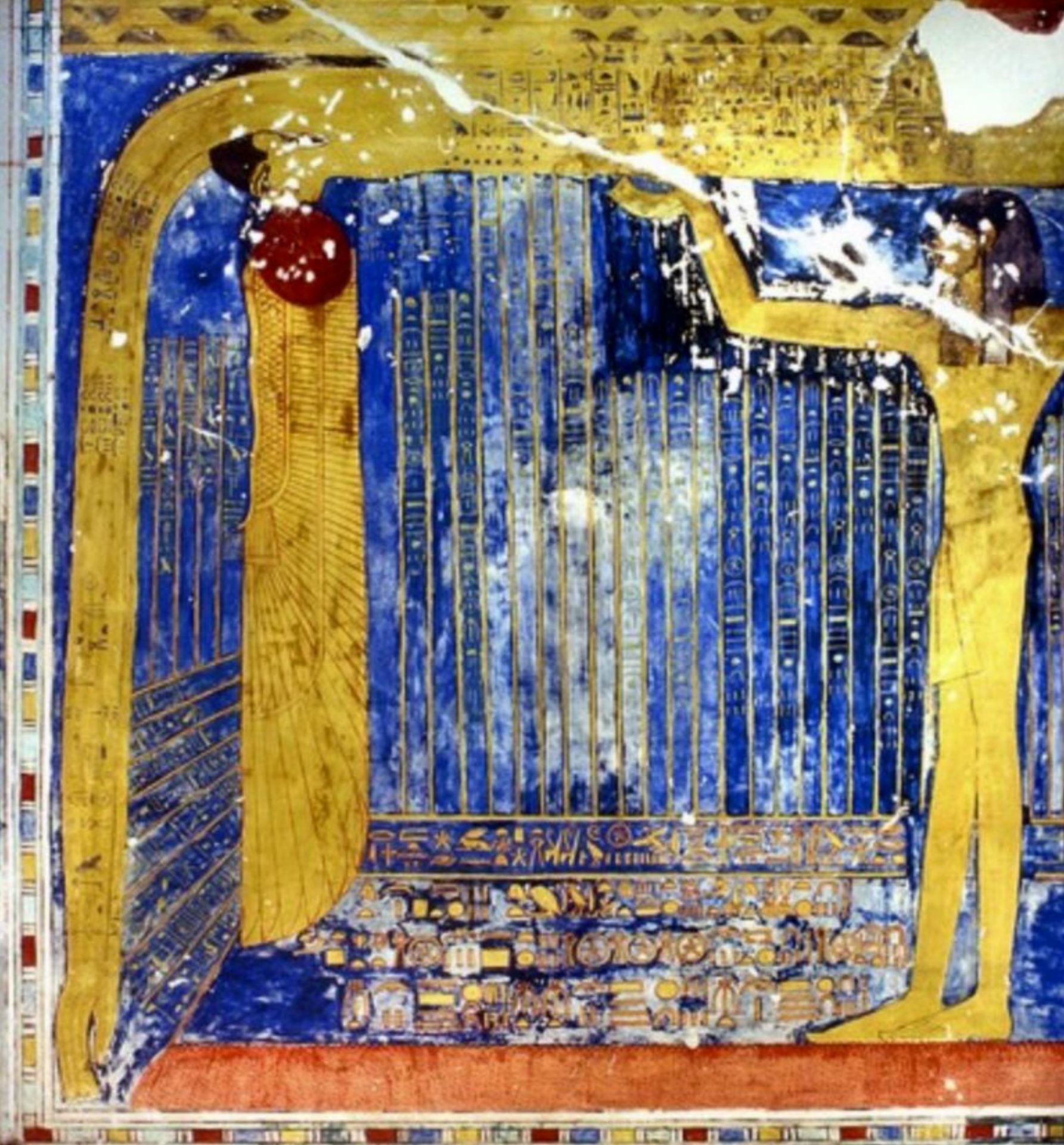
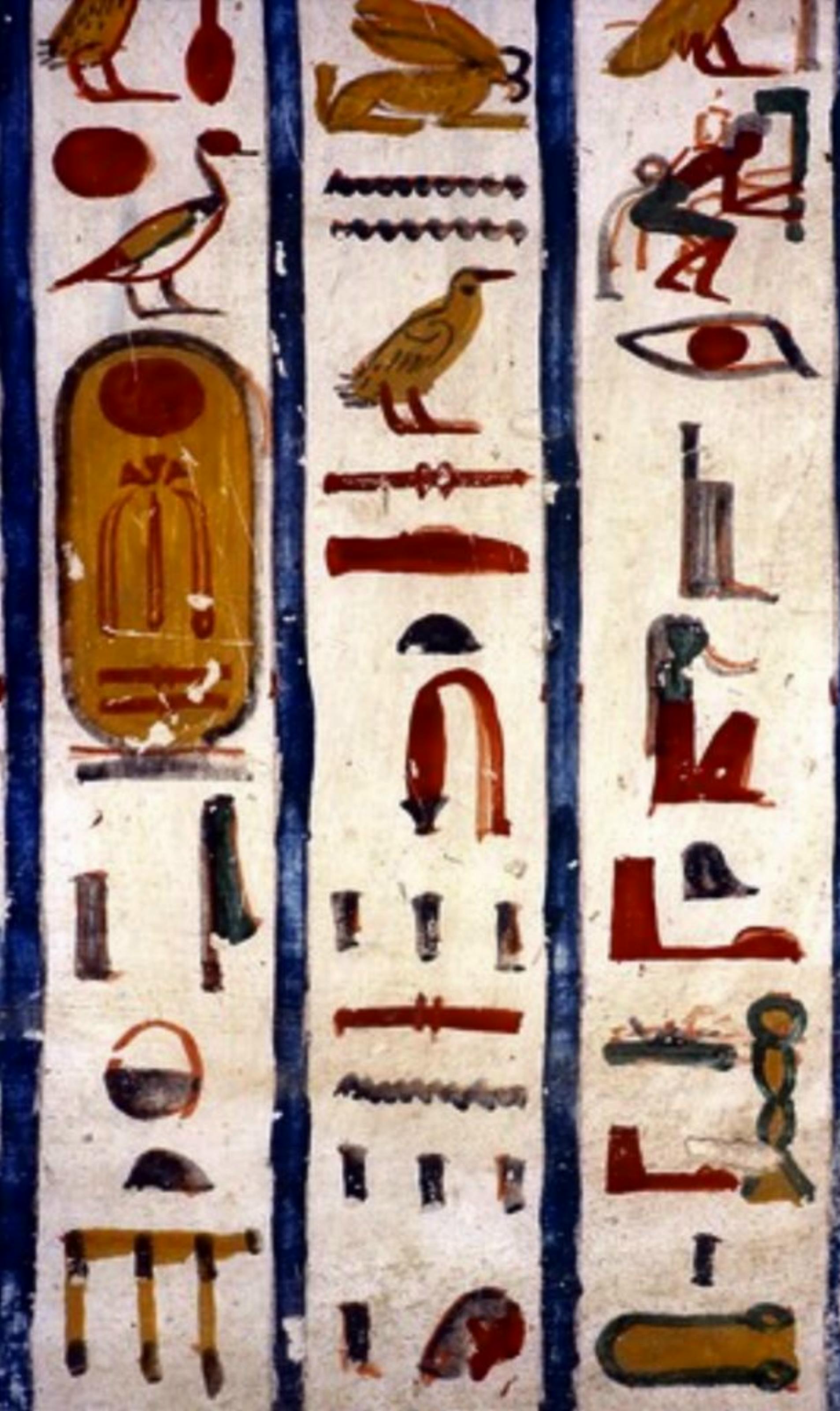
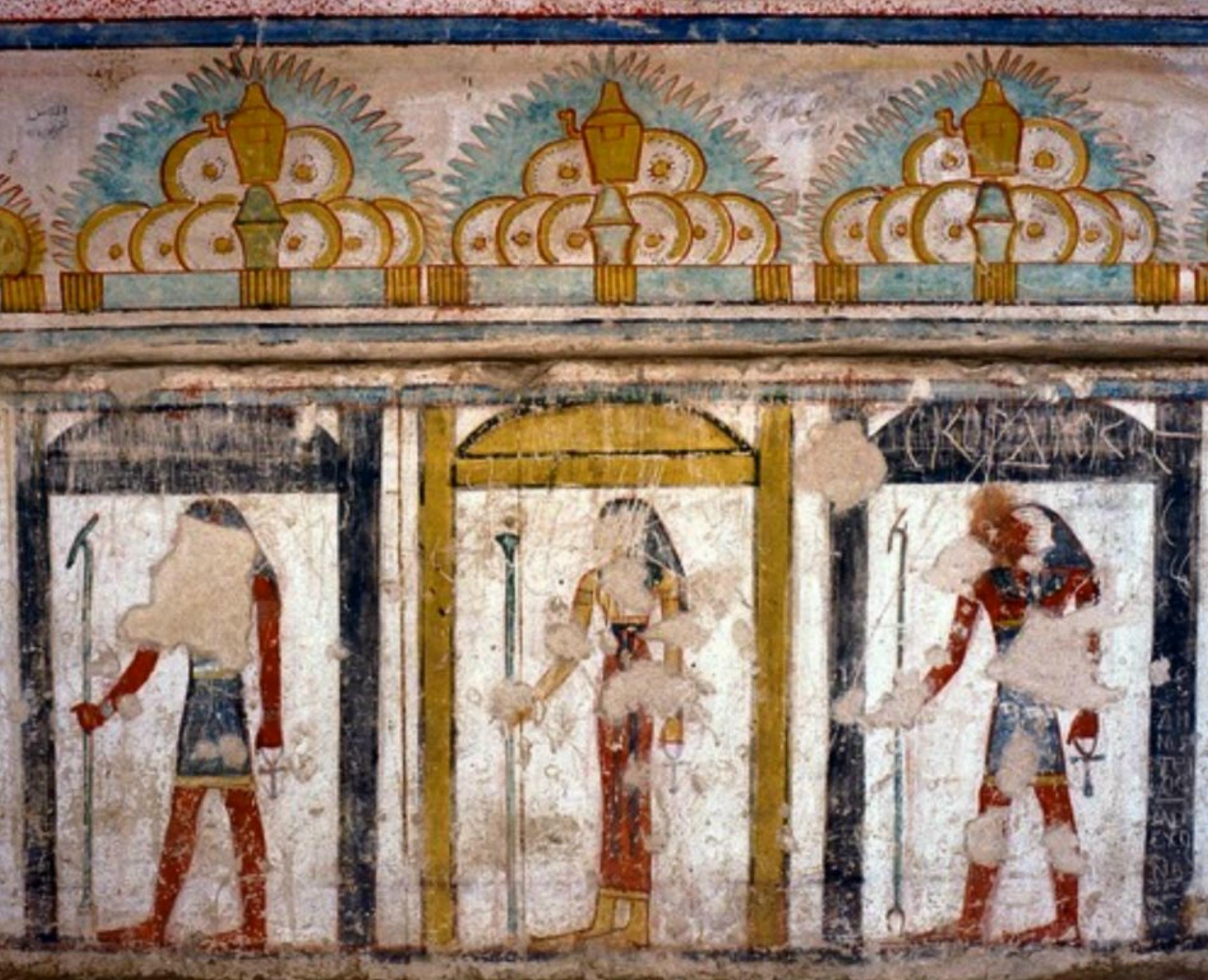
And finally his sarcophagus, the one thing the grave robbers couldn’t move.
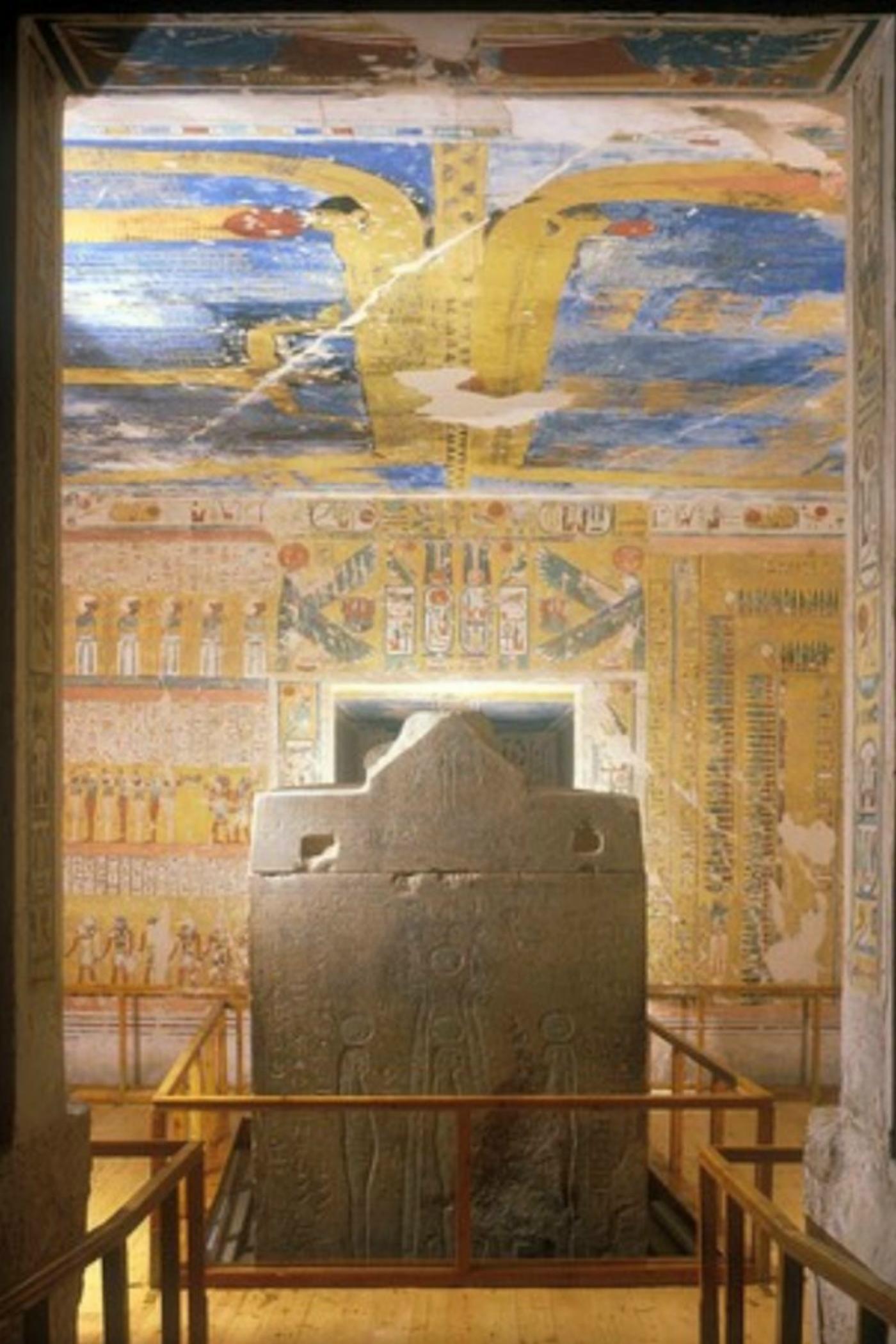
Merenptah
Merenptah, also Merneptah, was the Prince Charles of his day. He was the 13th son of Ramses II who reigned for over sixty years. By the time he died Merenptah was well on in age himself and didn’t last a decade, dying around 1202 B.C. and completely overshadowed by his father’s accomplishments. His tomb however is pretty impressive, much larger and deeper than Ramses IV, but not as brightly decorated.
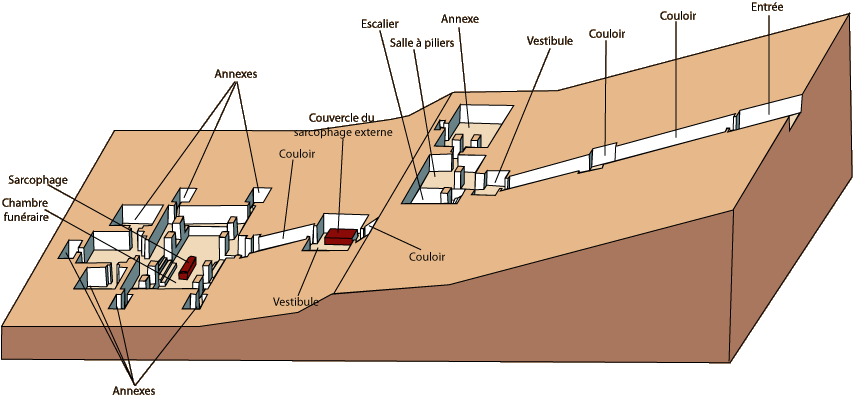
Here are some of the interior highlights.
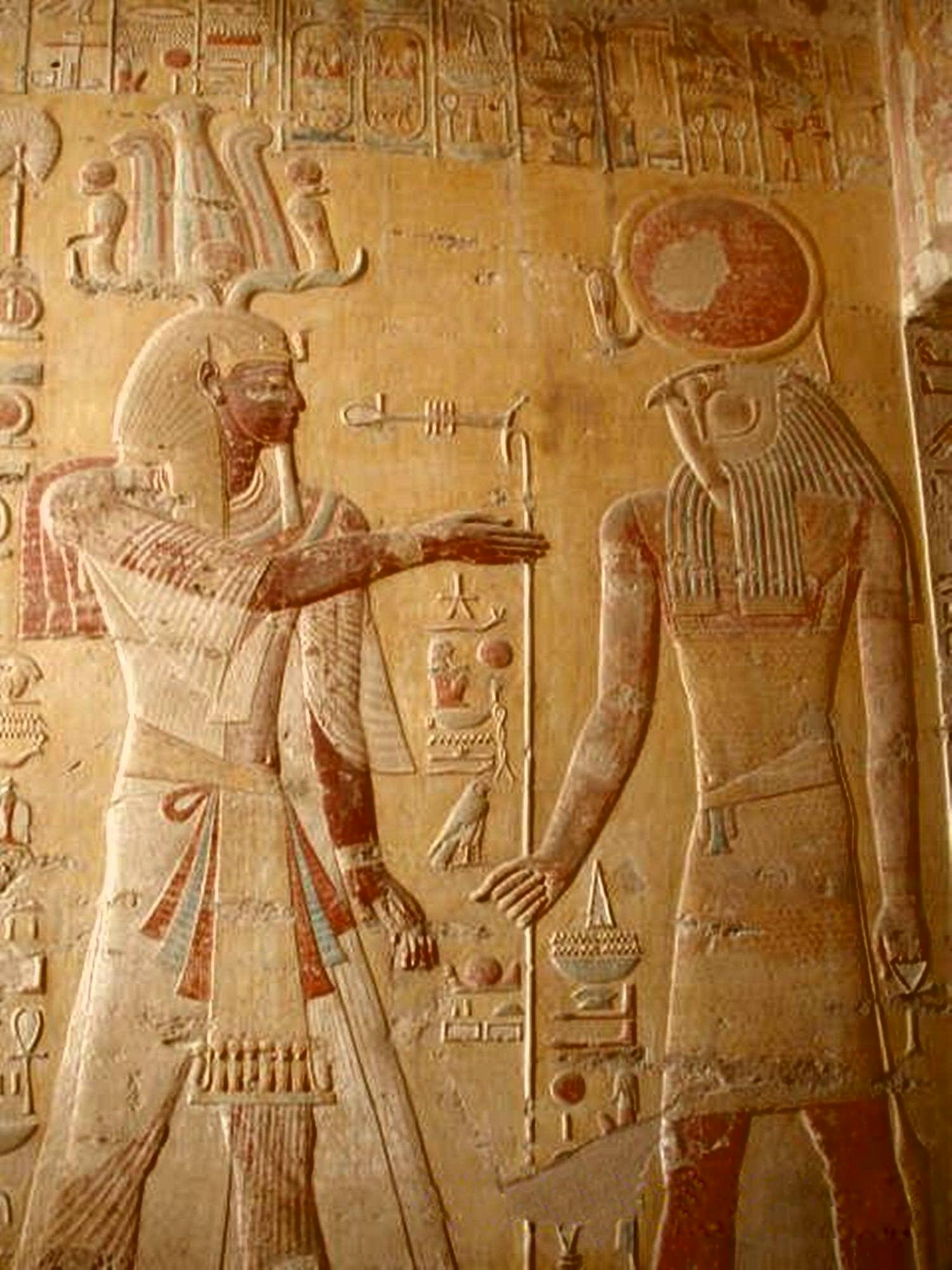
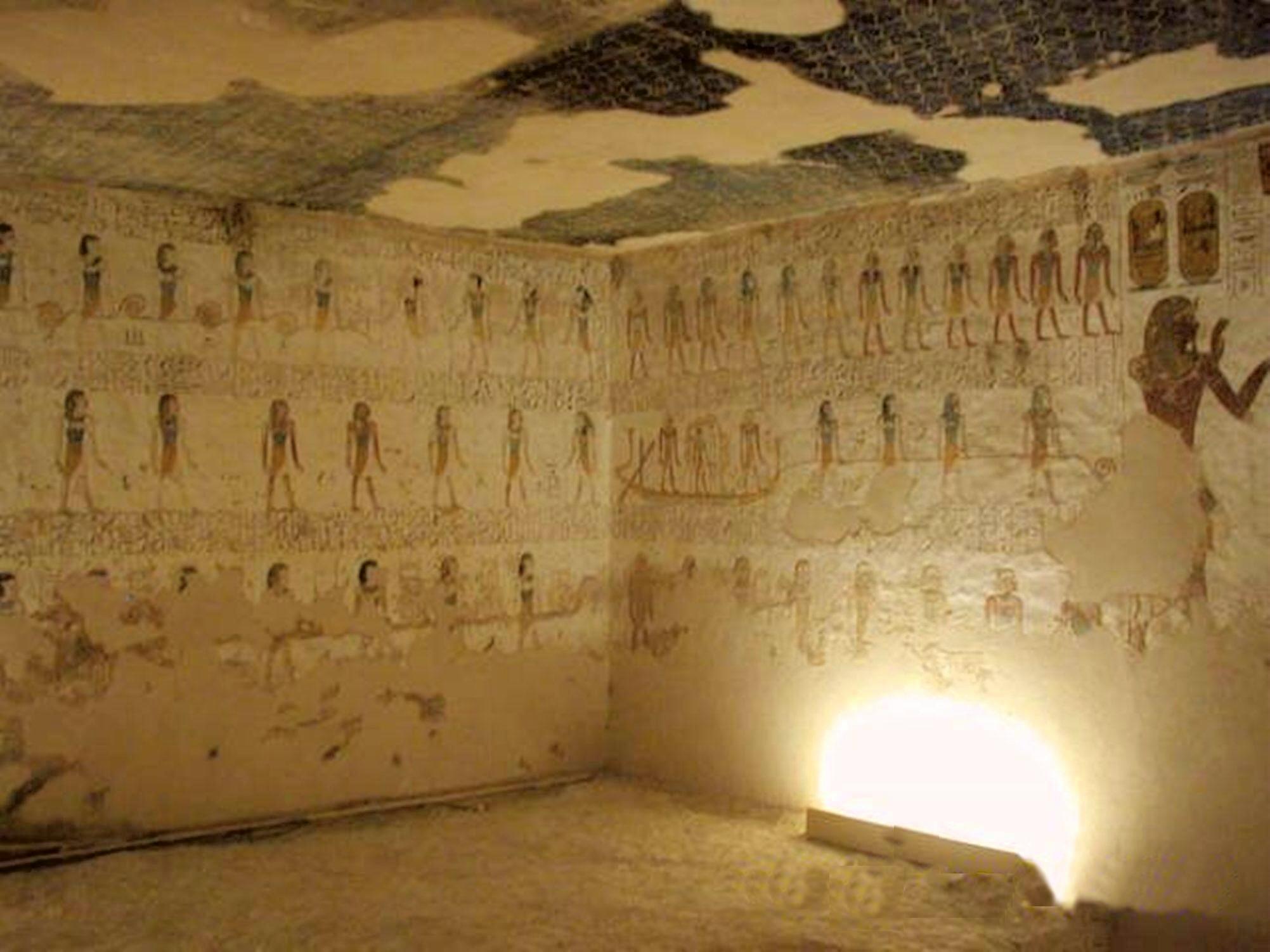
And his very well carved sarcophagus.
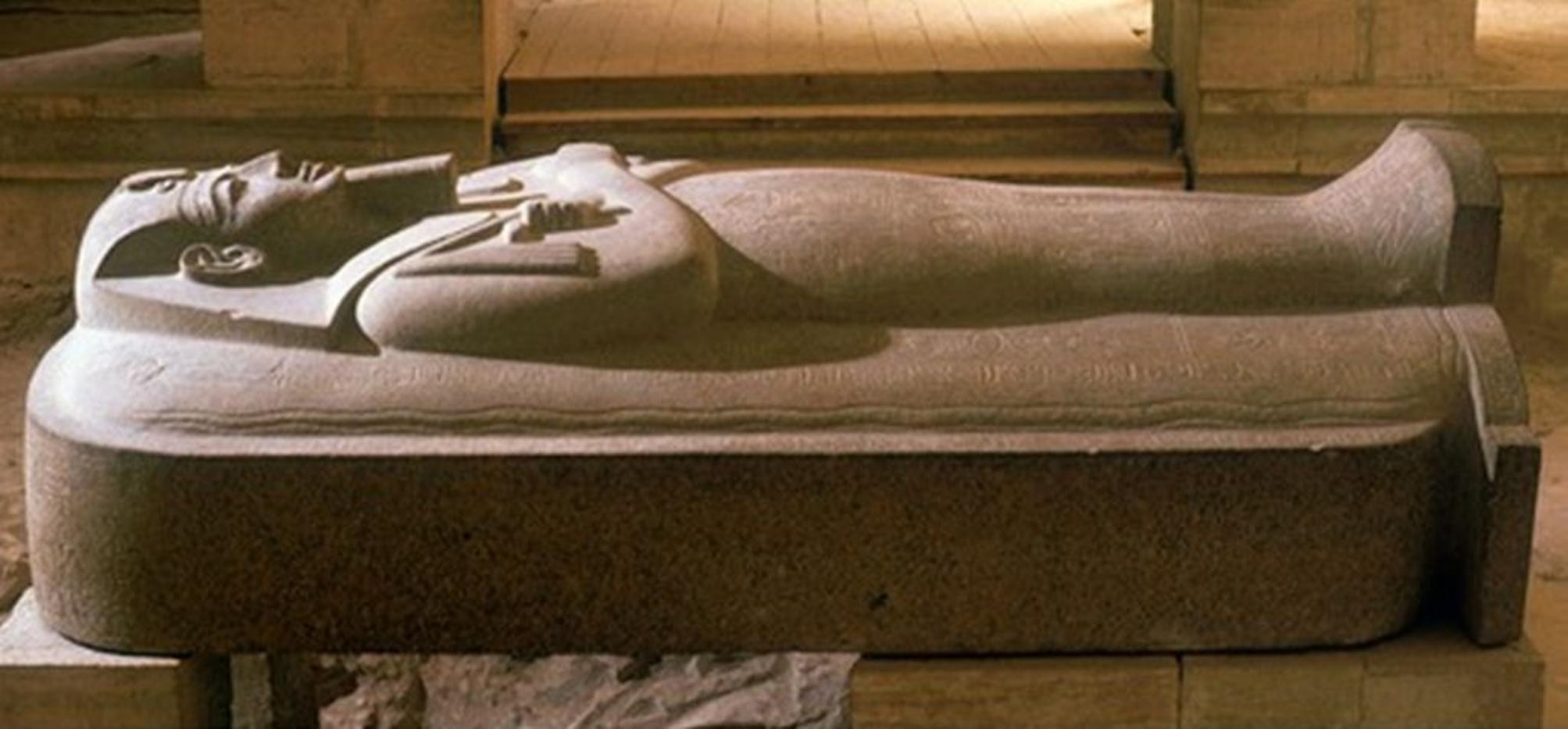
Thutmose III
Unlike our first two kings, Thutmose III was arguably the greatest king of ancient Egypt, surpassing even Ramses II in accomplishments, if not in hubris. A great military leader, he governed Egypt for over fifty years during which Egypt controlled the largest land area it would ever achieve. So I’m really expecting great things from this tomb.
It’s design is not linear, but rather L-shaped with a very large burial chamber.
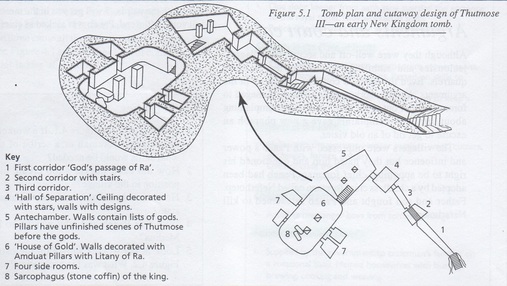
Somewhat surprisingly the entry way is nowhere near as grand as the first two and does resemble a tunnel more than a grand entryway.
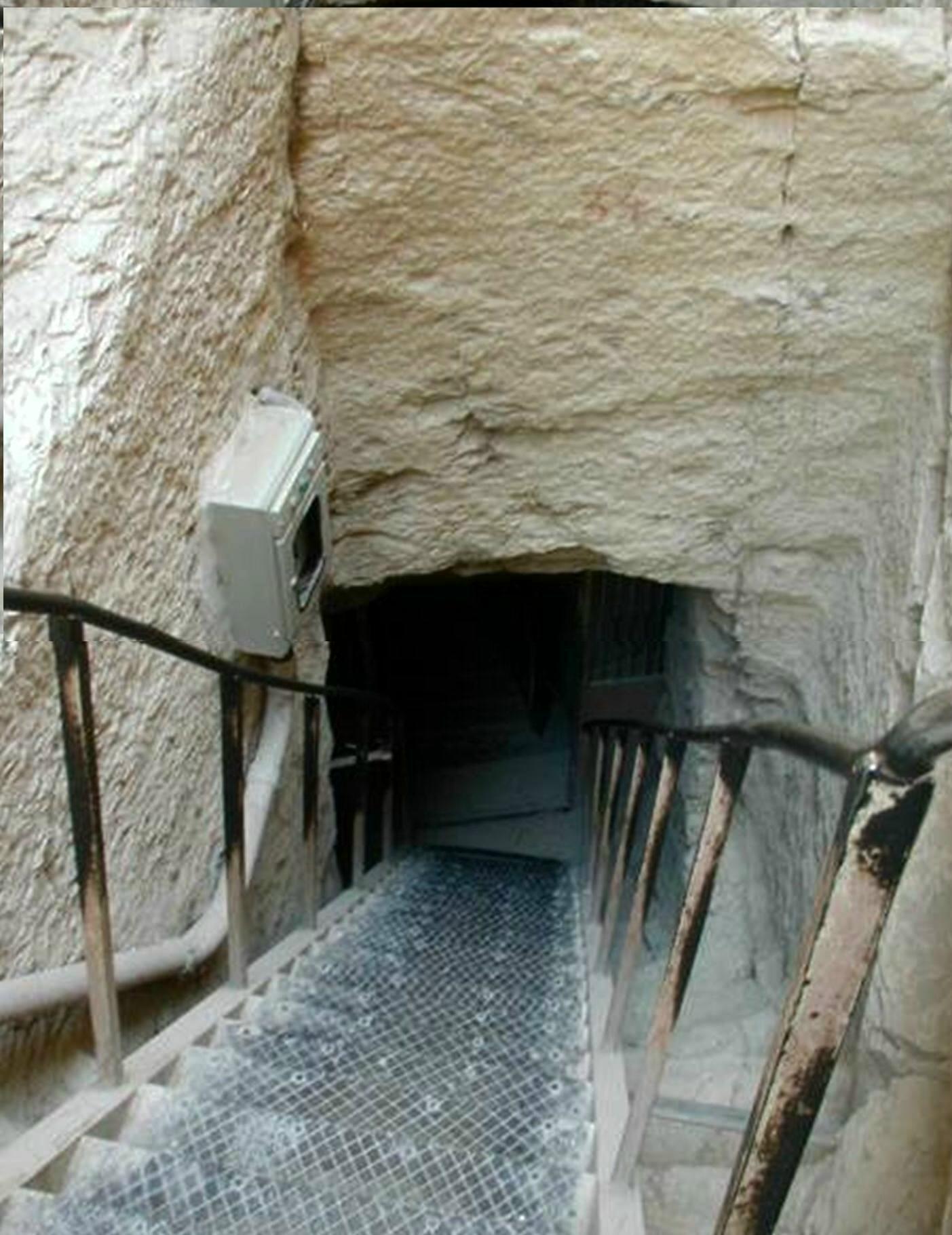
In this case they literally had to smash through a wall to get to the next room. Notice that the wall paintings are much more stylized than the previous two.
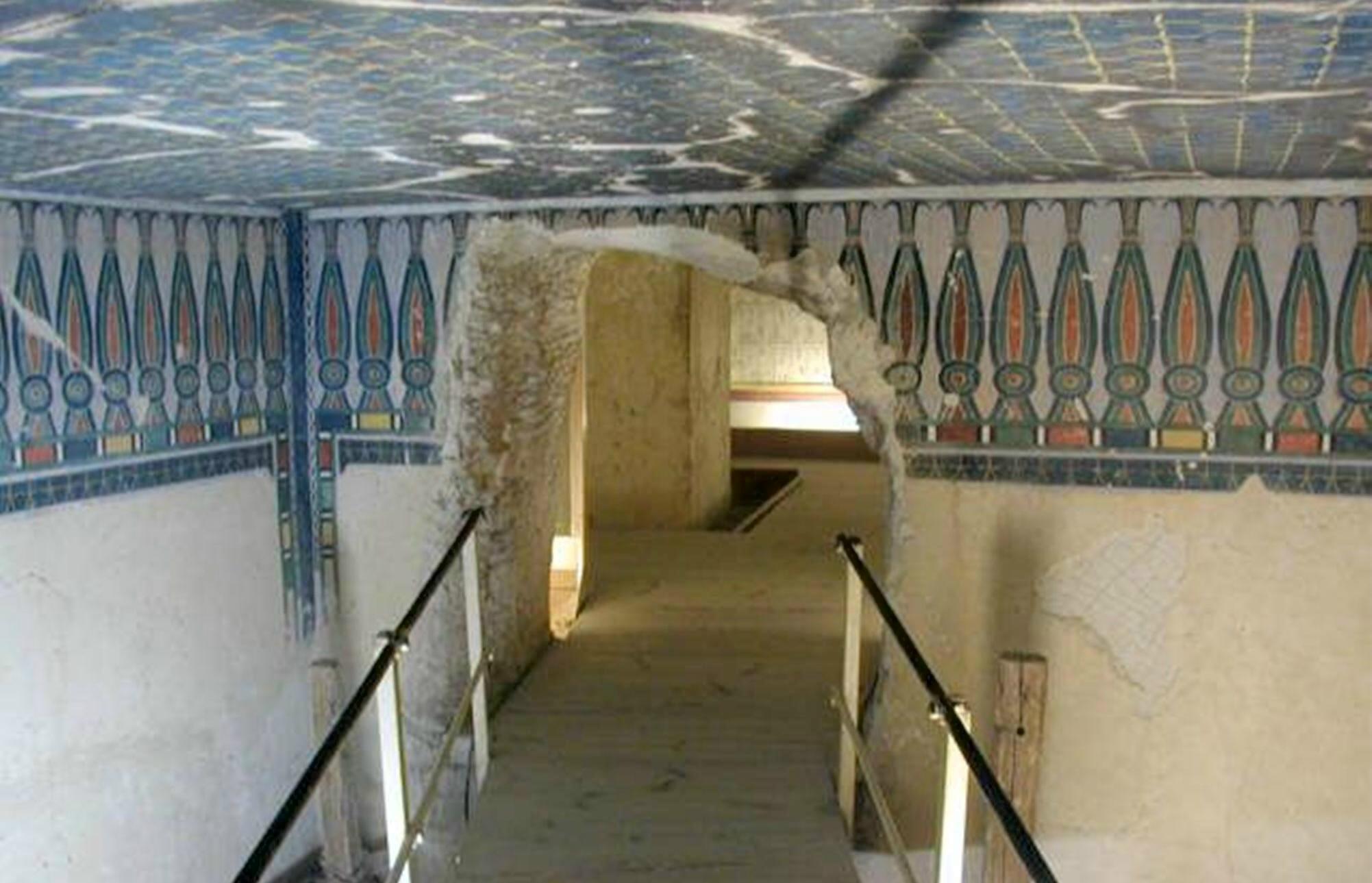
The difference in technique in this tomb is striking. We’ve seen nothing like it before. It is apparent that either tastes changed over time or that each king had his own idea of what constituted appropriate funereal art with Thutmose III opting for simplicity over glitter.
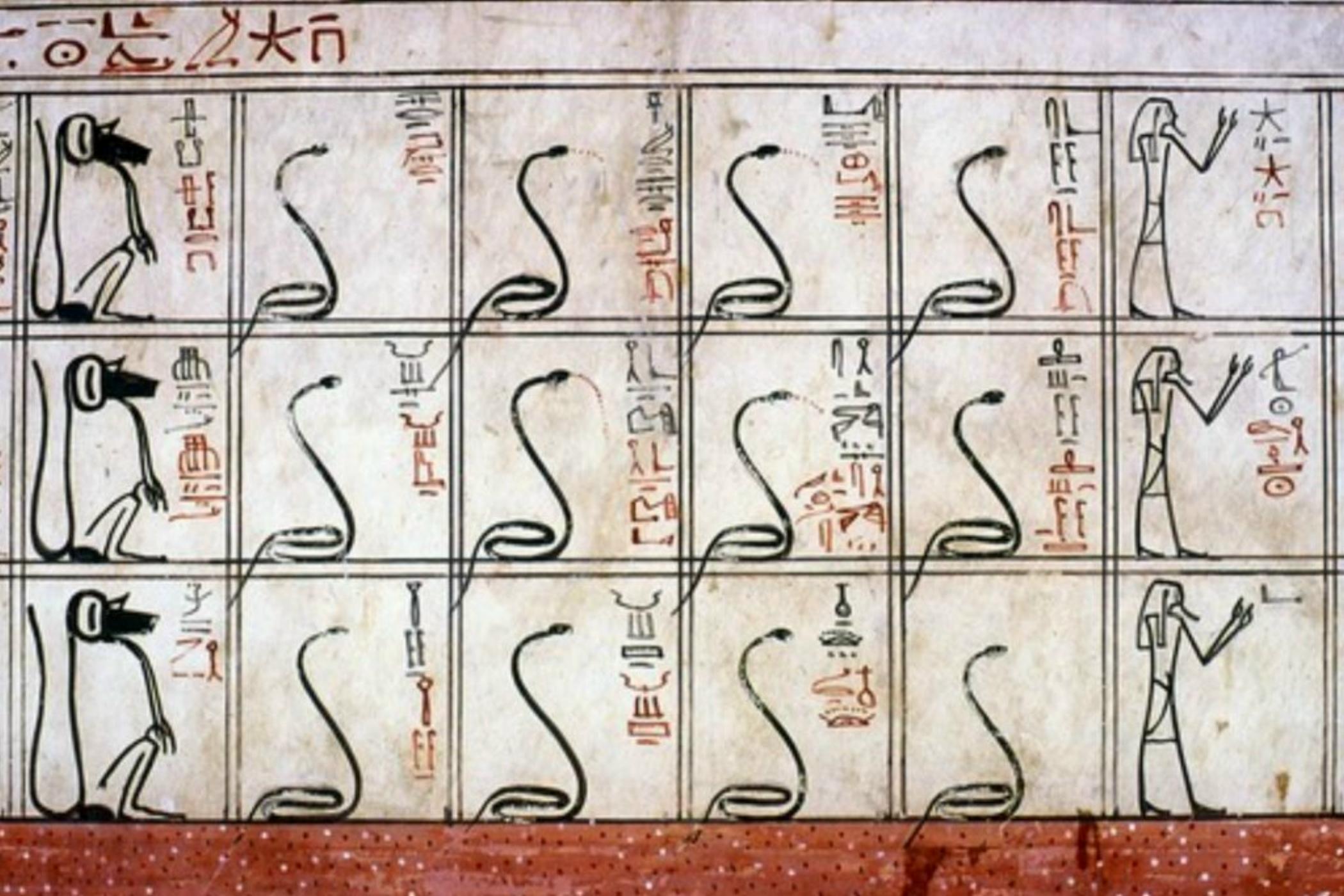
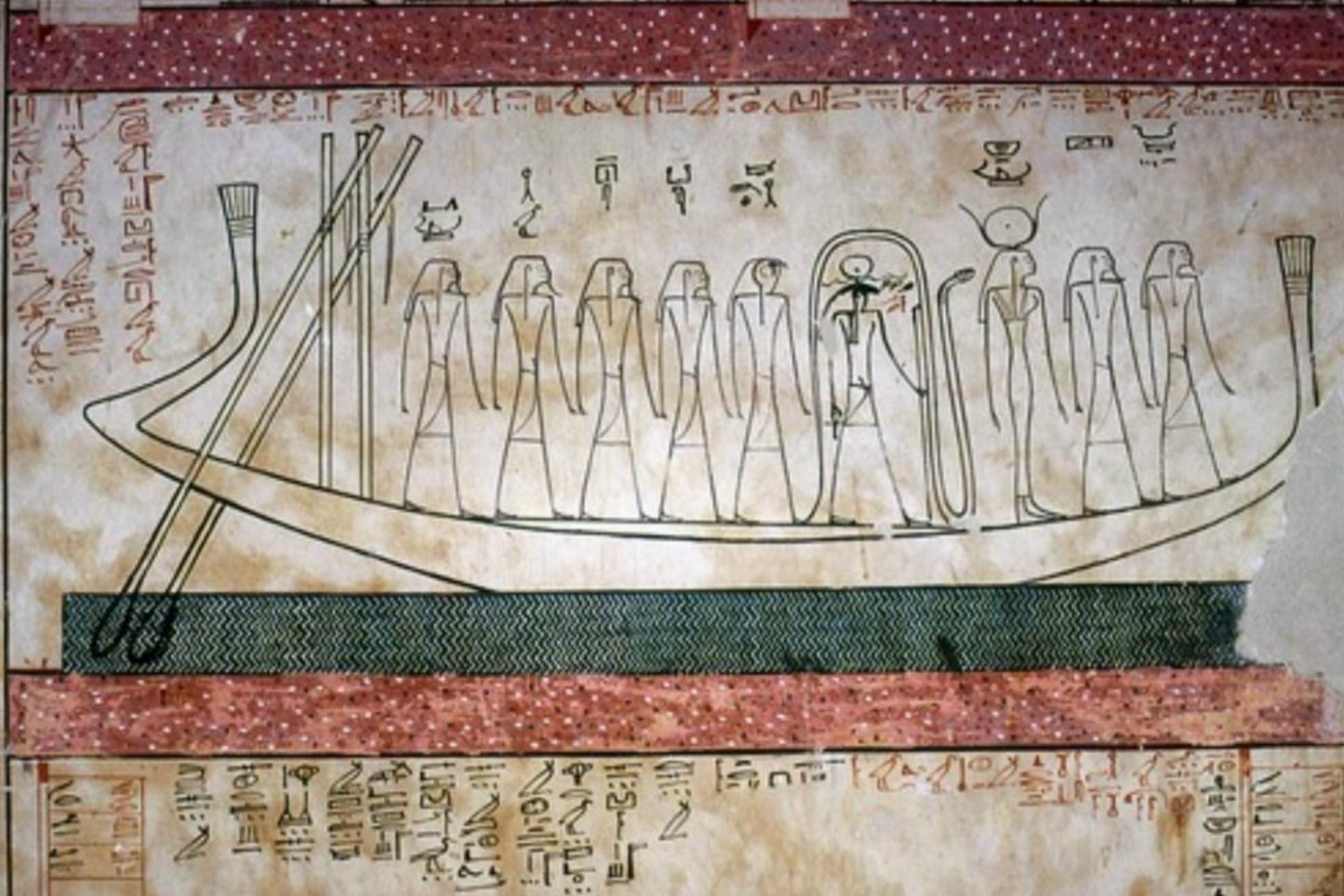
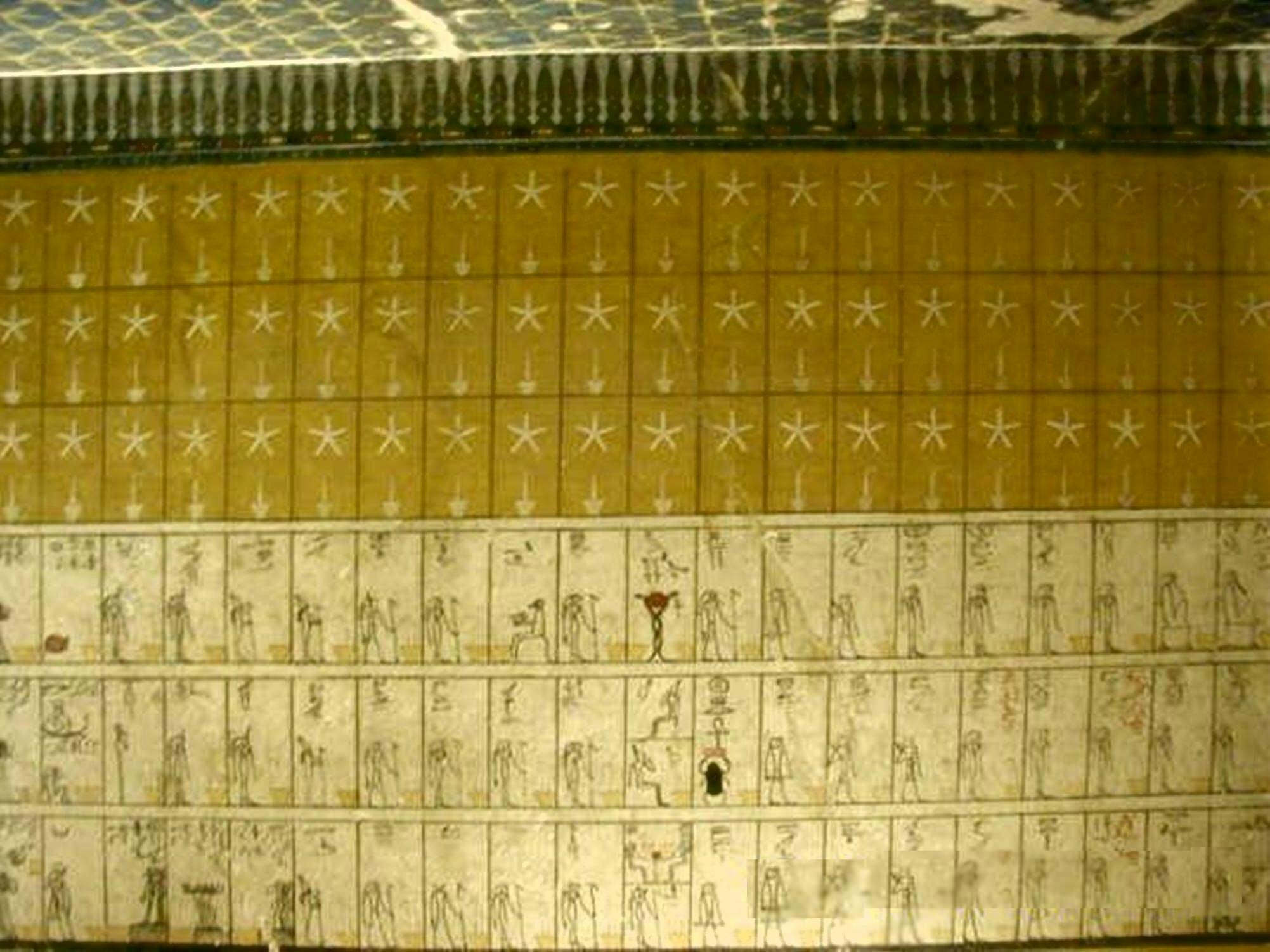
The sarcophagus is also relatively plain although it is made of rare red porphyry. Overall my impression of Thutmose III tomb is that he was a modest man.
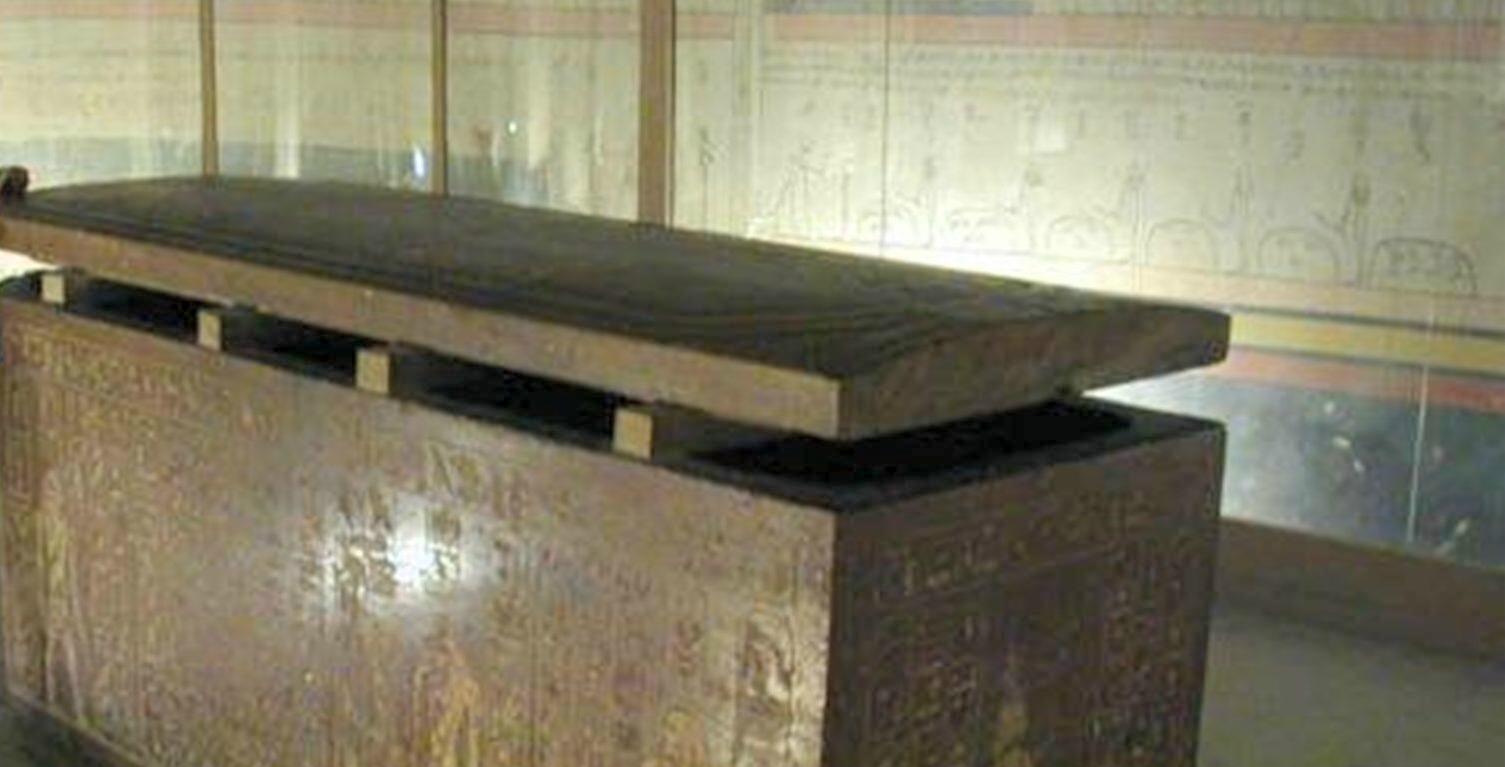
Tutankhamun
And now, the most famous tomb in history. There is a separate 100 Egyptian pound fee to enter Tutankhamun’s tomb. That’s only about seven Canadian dollars so who’s going to pass on this opportunity? Actually quite a few, surprisingly enough.
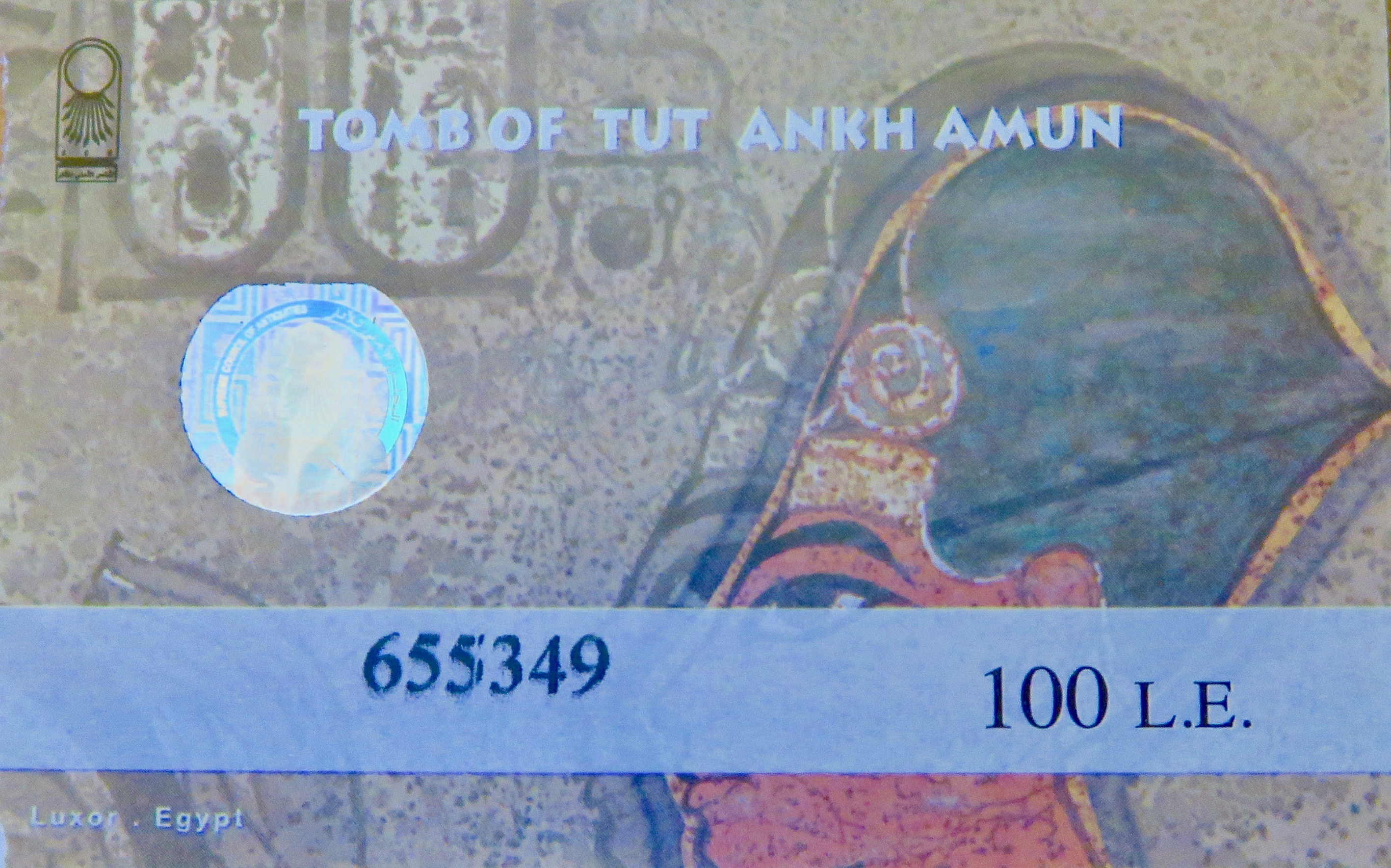
The plan of Tut’s tomb is different from the previous three. The entrance hallway leads to a series of rooms with sealed doors between all of them. It is incorrect to say that Tut’s tomb was completely intact. In fact, robbers had penetrated into one room, but never found the burial chamber where most of the riches were kept.
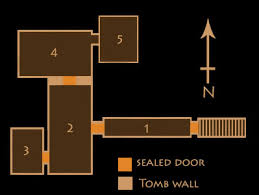
Here is the entrance.
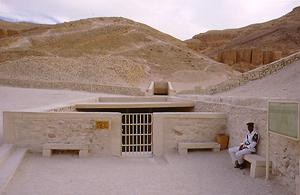
Alas, King Tut’s tomb is not famous for the tomb itself, but rather the treasures that were in it and of, course they’ve all been removed. Here are the plain walls of the storage room as it looked when Howard Carter opened it in 1923.
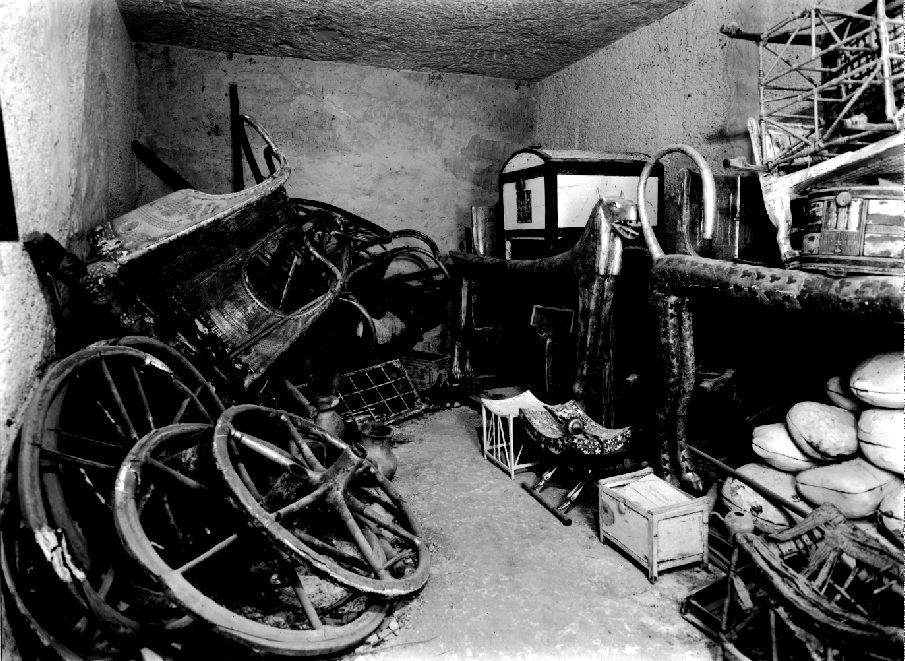
There are some interesting decorations to be sure, but nothing to compare with the other tombs.
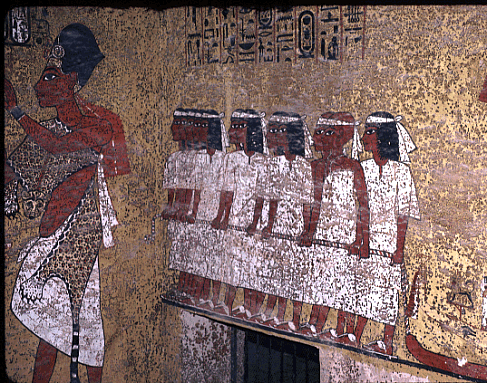
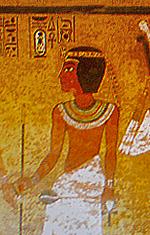
However, the real reason to visit Tutankhamun’s tomb came as a surprise to me – he’s still here! Yep, the boy king’s remains remain buried in his original tomb, but without all the accoutrements necessary to thrive in the after life. Somehow that doesn’t seem quite right.
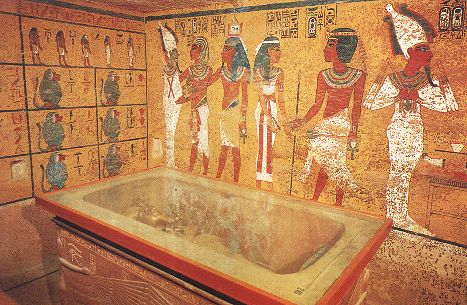
Visiting the the Valley of the Kings was way better than I expected. The place was not overrun with tourists and it was possible to enjoy the tombs, especially Tutankhamun’s, in relative peace and quiet. And if you get the chance for a donkey ride, don’t pass it up.
This is just the first of several posts on the treasures of the west bank. Next we visit Queen Hatshepsut’s Temple, scene of an infamous terrorist attack.
For your viewing pleasure here is a link to the Egypt photo gallery with over one hundred and fifty photos from this amazing trip.

